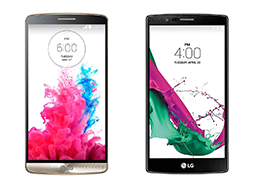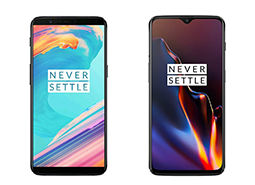An Intro to AI Image Recognition and Image Generation
Our model can process hundreds of tags and predict several images in one second. If you need greater throughput, please contact us and we will show you the possibilities offered by AI. In other words, the engineer’s expert intuitions and the quality of the simulation tools they use both contribute to enriching the quality of these Generative Design algorithms and the accuracy of their predictions. Figure 2 shows an image recognition system example and illustration of the algorithmic framework we use to apply this technology for the purpose of Generative Design. Every iteration of simulations or tests provides engineers with new learning on how to best refine their design, based on complex goals and constraints. Finding an optimum solution means being creative about what designs to evaluate and how to evaluate them.
China releases plans to restrict facial recognition technology – CNBC
China releases plans to restrict facial recognition technology.
Posted: Tue, 08 Aug 2023 07:00:00 GMT [source]
Social media networks have seen a significant rise in the number of users, and are one of the major sources of image data generation. These images can be used to understand their target audience and their preferences. We have seen shopping complexes, movie theatres, and automotive industries commonly using barcode scanner-based machines to smoothen the experience and automate processes. It is used in car damage assessment by vehicle insurance companies, product damage inspection software by e-commerce, and also machinery breakdown prediction using asset images etc. Annotations for segmentation tasks can be performed easily and precisely by making use of V7 annotation tools, specifically the polygon annotation tool and the auto-annotate tool. A label once assigned is remembered by the software in the subsequent frames.
Loading and Displaying Images in Google Colab: A Guide with OpenCV, PIL, and Matplotlib
If a machine is programmed to recognize one category of images, it will not be able to recognize anything else outside of the program. The machine will only be able to specify whether the objects present in a set of images correspond to the category or not. Whether the machine will try to fit the object in the category, or it will ignore it completely. Once a model is trained, it can be used to recognize (or predict) an unknown image. Notice that the new image will also go through the pixel feature extraction process.
It is used in many applications like defect detection, medical imaging, and security surveillance. Local Binary Patterns (LBP) is a texture analysis method that characterizes the local patterns of pixel intensities in an image. It works by comparing the central pixel value with its neighboring pixels and encoding the result as a binary pattern.
Step 1: Extraction of Pixel Features of an Image
The model then detects and localizes the objects within the data, and classifies them as per predefined labels or categories. Large installations or infrastructure require immense efforts in terms of inspection and maintenance, often at great heights or in other hard-to-reach places, underground or even under water. Small defects in large installations can escalate and cause great human and economic damage. Vision systems can be perfectly trained to take over these often risky inspection tasks. Defects such as rust, missing bolts and nuts, damage or objects that do not belong where they are can thus be identified. These elements from the image recognition analysis can themselves be part of the data sources used for broader predictive maintenance cases.
- With image recognition, a machine can identify objects in a scene just as easily as a human can — and often faster and at a more granular level.
- In the coming sections, by following these simple steps we will make a classifier that can recognise RGB images of 10 different kinds of animals.
- Now that we learned how deep learning and image recognition work, let’s have a look at two popular applications of AI image recognition in business.
- Facial recognition, object recognition, real time image analysis – only 5 or 10 years ago we’ve seen this all in movies and were amazed by these futuristic technologies.
- For a machine, however, hundreds and thousands of examples are necessary to be properly trained to recognize objects, faces, or text characters.
The image is loaded and resized by tf.keras.preprocessing.image.load_img and stored in a variable called image. This image is converted into an array by tf.keras.preprocessing.image.img_to_array. The platform can display lesion images, parameters, variation tendency of the disease, etc. (Fig. 8). The study tracks the key market parameters, underlying growth influencers, and major vendors operating in the industry, which supports the market estimations and growth rates during the forecast period. The study also revenue from the various AI image recognition types used across end-user industries. The study provides global AI image recognition market trends and key vendor profiles.
These neural networks are now widely used in many applications, such as how Facebook itself suggests certain tags in photos based on image recognition. It is a well-known fact that the bulk of human work and time resources are spent on assigning tags and labels to the data. This produces labeled data, which is the resource that your ML algorithm will use to learn the human-like vision of the world. Naturally, models that allow artificial intelligence image recognition without the labeled data exist, too. They work within unsupervised machine learning, however, there are a lot of limitations to these models. If you want a properly trained image recognition algorithm capable of complex predictions, you need to get help from experts offering image annotation services.
Image recognition is a process of identifying and detecting an object or a feature in a digital image or video. It can be used to identify individuals, objects, locations, activities, and emotions. This can be done either through software that compares the image against a database of known objects or by using algorithms that recognize specific patterns in the image. We use the most advanced neural network models and machine learning techniques. Continuously try to improve the technology in order to always have the best quality. Each model has millions of parameters that can be processed by the CPU or GPU.
Enhancing Accuracy in Image Recognition with Convolutional Neural Networks (CNNs)
Thanks to this competition, there was another major breakthrough in the field in 2012. A team from the University of Toronto came up with Alexnet (named after Alex Krizhevsky, the scientist who pulled the project), which used a convolutional neural network architecture. In the first year of the competition, the overall error rate of the participants was at least 25%. With Alexnet, the first team to use deep learning, they managed to reduce the error rate to 15.3%.
Read more about https://www.metadialog.com/ here.
















